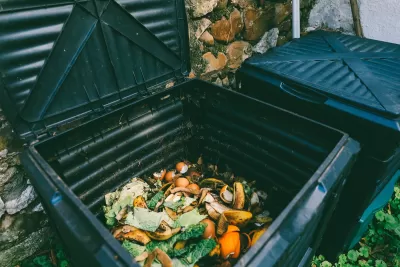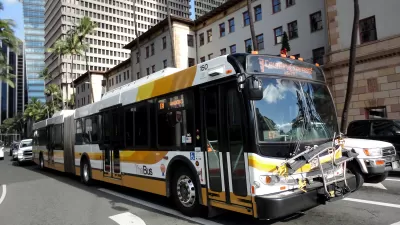The state has reduced its methane emissions by 25.7 percent per ton of waste following a law that seeks to eliminate food waste from landfills.

A study published in Science reveals that Massachusetts is the only state where a food waste ban has successfully curbed the amount of food waste that goes to landfills.
As Kristin Toussaint explains in Fast Company, food waste bans seek to cut down on methane emissions caused by organic matter in landfills. However, laws passed in California, Connecticut, Rhode Island, and Vermont haven’t been nearly as effective as the one in Massachusetts, where the state achieved a 13.2 percent reduction in waste and a 25.7 percent decrease in methane emissions per ton of waste.
The researchers identified three reasons for the success of the state’s food waste ban: “a simple law with a small number of exemptions; a robust network of composting infrastructure so it was easy and affordable for businesses to compost rather than trash their food waste; and an enforcement system.”
According to the researchers, “Massachusetts, the researchers found, had more than triple the number of inspections per business that generated food waste than the next closest state, which was Vermont,” the most facilities to process food waste, and a clear law that applies to all businesses that generate more than half a ton of food waste per week.
FULL STORY: Why food waste bans have totally failed—except in Massachusetts

Alabama: Trump Terminates Settlements for Black Communities Harmed By Raw Sewage
Trump deemed the landmark civil rights agreement “illegal DEI and environmental justice policy.”

Study: Maui’s Plan to Convert Vacation Rentals to Long-Term Housing Could Cause Nearly $1 Billion Economic Loss
The plan would reduce visitor accommodation by 25% resulting in 1,900 jobs lost.

Planetizen Federal Action Tracker
A weekly monitor of how Trump’s orders and actions are impacting planners and planning in America.

Paris Bike Boom Leads to Steep Drop in Air Pollution
The French city’s air quality has improved dramatically in the past 20 years, coinciding with a growth in cycling.

Why Housing Costs More to Build in California Than in Texas
Hard costs like labor and materials combined with ‘soft’ costs such as permitting make building in the San Francisco Bay Area almost three times as costly as in Texas cities.

San Diego County Sees a Rise in Urban Coyotes
San Diego County experiences a rise in urban coyotes, as sightings become prevalent throughout its urban neighbourhoods and surrounding areas.
Urban Design for Planners 1: Software Tools
This six-course series explores essential urban design concepts using open source software and equips planners with the tools they need to participate fully in the urban design process.
Planning for Universal Design
Learn the tools for implementing Universal Design in planning regulations.
Smith Gee Studio
Alamo Area Metropolitan Planning Organization
City of Santa Clarita
Institute for Housing and Urban Development Studies (IHS)
City of Grandview
Harvard GSD Executive Education
Toledo-Lucas County Plan Commissions
Salt Lake City
NYU Wagner Graduate School of Public Service





























